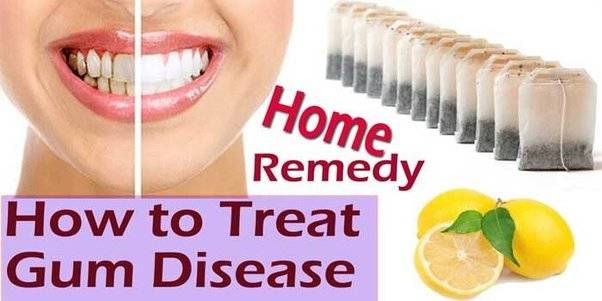Periodontal gum disease, also known as periodontitis, is a common condition that affects the gums and surrounding tissues supporting the teeth. It is caused by bacteria found in plaque, the sticky film of bacteria that constantly forms on teeth. If left untreated, periodontal gum disease can lead to gum recession, bone loss, and eventually tooth loss. While professional treatment by a dentist or periodontist is crucial for managing advanced cases, there are several effective home care strategies that can help manage and improve periodontal gum disease. This article explores various methods and techniques for treating periodontal gum disease at home, empowering individuals to take proactive steps towards better gum health.
Understanding Periodontal Gum Disease
Before delving into home treatment options, it is important to understand the stages and symptoms of periodontal gum disease:
Gingivitis: The earliest stage of gum disease, characterized by inflammation of the gums due to plaque buildup. Symptoms may include red, swollen gums that bleed easily during brushing or flossing.
Periodontitis: If gingivitis is left untreated, it can progress to periodontitis. This stage involves the inflammation and infection of the gums, causing them to pull away from the teeth and form pockets that become infected. Periodontitis can lead to irreversible damage to the gums, bone, and ligaments supporting the teeth.
Common symptoms of periodontal gum disease include persistent bad breath, receding gums, loose teeth, and changes in the way teeth fit together when biting.
SEE ALSO: Can Gums Grow Back After Periodontal Disease?
Home Treatment Strategies for Periodontal Gum Disease
While professional dental care is essential for managing periodontal gum disease, incorporating effective home care practices can complement professional treatment and promote gum health. The following strategies can help individuals manage and potentially improve their gum disease at home:
1. Maintain Good Oral Hygiene
Effective oral hygiene practices are fundamental for managing periodontal gum disease and preventing its progression:
Brushing: Brush teeth thoroughly twice a day using a soft-bristled toothbrush and fluoride toothpaste. Pay special attention to brushing along the gumline and gently massage the gums as you brush.
Flossing: Floss between teeth and along the gumline daily to remove plaque and debris that brushing alone may not reach.
Proper flossing technique involves gently sliding the floss between teeth, curving it around each tooth in a C shape, and carefully moving it up and down to clean both sides of the tooth.
Antimicrobial Mouthwash: Rinse with an antimicrobial mouthwash after brushing and flossing to help reduce bacteria that cause gum disease. Look for mouthwashes containing chlorhexidine or essential oils like tea tree oil.
2. Adopt a Gum-Healthy Diet
Nutrition plays a crucial role in overall oral health and can influence the progression of gum disease:
Eat Plenty of Fruits and Vegetables: These foods are rich in vitamins and antioxidants that support gum health and immune function.
Include leafy greens, berries, citrus fruits, and crunchy vegetables like carrots and celery.
Limit Sugar and Processed Foods: Sugary and starchy foods can contribute to plaque buildup and increase the risk of gum disease. Opt for whole grains, lean proteins, and snacks low in sugar to help maintain healthy gums.
Stay Hydrated: Drinking plenty of water helps rinse away food particles and bacteria that can contribute to gum disease.
Aim to drink water throughout the day and limit sugary beverages.
3. Use Dental Products Designed for Gum Health
Choosing oral care products specifically formulated for gum health can enhance your home care routine:
Soft Toothbrush: Use a soft-bristled toothbrush to gently clean teeth and gums without causing irritation or damage to sensitive tissues.
Electric Toothbrush: An electric toothbrush with oscillating or rotating bristles may be more effective at removing plaque and reducing gingival inflammation compared to manual brushing.
Interdental Brushes or Picks: These tools can help clean between teeth and along the gumline, where plaque and food debris can accumulate.
4. Practice Stress Management
Chronic stress can weaken the immune system and exacerbate inflammation, including gum inflammation associated with periodontal gum disease:
Relaxation Techniques: Incorporate stress-reducing activities into your daily routine, such as deep breathing, meditation, yoga, or hobbies that help you unwind.
Regular Exercise: Physical activity can help reduce stress levels and promote overall health, including immune function that supports gum health.
5. Quit Smoking and Tobacco Use
Smoking and tobacco use are significant risk factors for gum disease and can impair healing after dental procedures:
Seek Support: If you smoke or use tobacco products, consider quitting with the support of healthcare professionals, cessation programs, or support groups. Quitting smoking can improve gum health and overall oral health.
6. Monitor and Maintain Regular Dental Visits
Regular dental check-ups and professional cleanings are essential for monitoring the progression of gum disease and preventing complications:
Professional Cleanings: Dental cleanings remove plaque and tartar buildup that cannot be effectively removed through brushing and flossing alone. Professional cleanings also provide an opportunity for your dentist or dental hygienist to assess your gum health and provide personalized recommendations.
Periodontal Evaluation: If you have been diagnosed with gum disease, your dentist or periodontist may recommend more frequent dental visits to monitor your condition and adjust treatment as needed.
Conclusion
Managing periodontal gum disease requires a comprehensive approach that includes both professional dental care and effective home treatment strategies. By maintaining good oral hygiene, adopting a gum-healthy diet, using appropriate dental products, managing stress, quitting smoking, and attending regular dental visits, individuals can help manage gum disease and promote long-term oral health. It is important to consult with a dentist or periodontist for personalized recommendations and treatment planning based on your specific needs and the severity of your gum disease.

